
Curing hyperkeratosis
Originally posted on
Jun 22, 2014

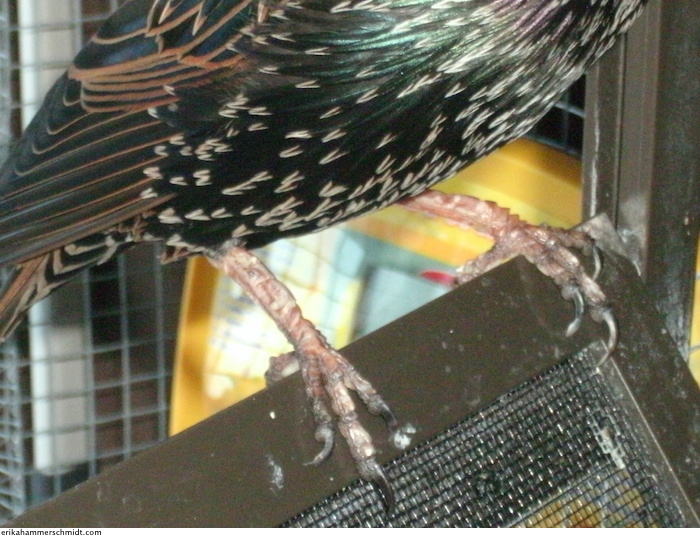
This is a post about the amazing progress we've made on the health of our bird. It goes into more detail about the overgrown foot scales we mentioned before, and the exact process we used for treating them.
If you don't like looking at pictures of scaly bird feet, both healthy and unhealthy, then this post is not for you.
This is where I found out about overgrown scales on the feet of starlings. They can be caused by a deficiency of vitamin A, or a deficiency of protein (which is needed for absorbing vitamin A). They can also be caused by other things that can impede a healthy molt, like a lack of sunlight or bathing water.
It's normal for starlings to shed their scales. I think usually it happens during the molt, and usually just a few scales at a time are shed, over a long period of days, so you wouldn't necessarily notice it. But if the bird is not able to molt properly for some reason (nutrient deficiency or whatever) the scales can get overgrown.
This is the third home Sirius Marley has had, and in his first home he ate a food without the proper ratio of fat and protein. During the time he lived in his second home, he's said to have improved a bit, but he still had insanely overgrown scales when he started living with us.
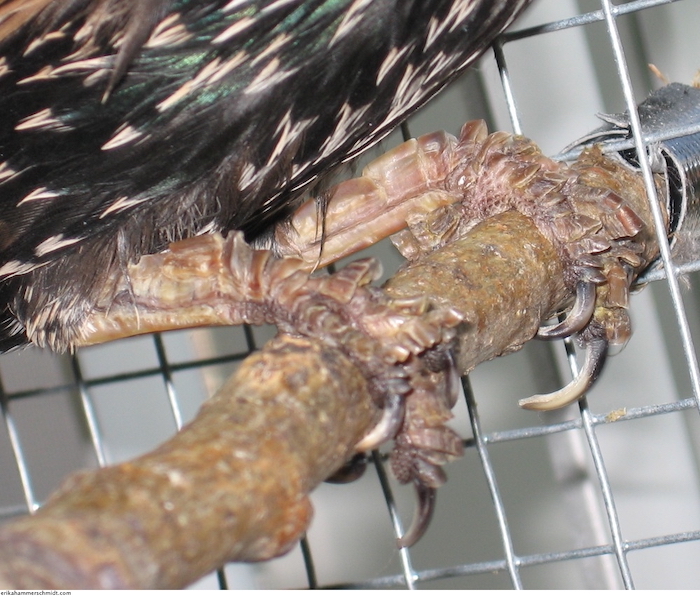
Here are Siri's feet shortly after we adopted him, in July of 2013. He looks like some monster from a video game.
On the advice of some great people on the Starlingtalk.com forums, I started an aloe vera treatment in hopes of softening his scales. Every day, I mix his bath water with a generous splash of aloe liquid , intended as a supplement in drinks. After his bath I catch him and rub his feet with a very pure aloe gel (he hates this, but he forgives me afterwards!)
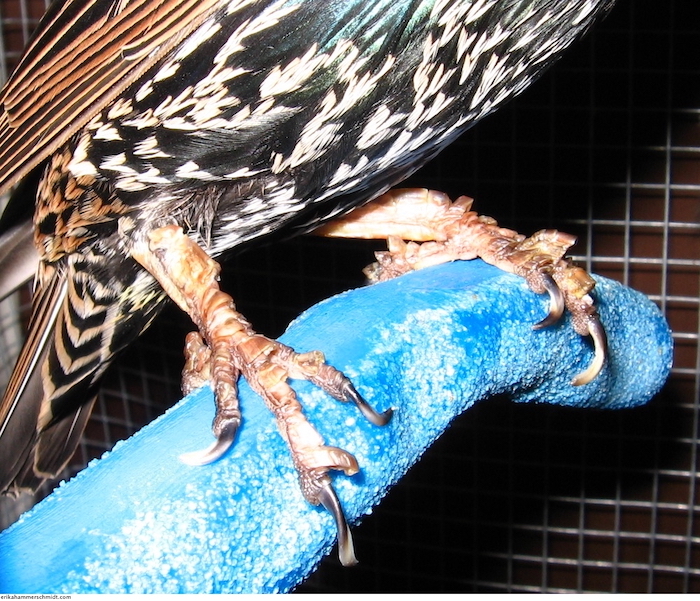
Here he is on September 4th. After a month or so of the aloe treatment, he'd shed a lot of the big scales, though he still had quite a few left-- most notably on the end of his right middle toe and the middle knuckle of his left middle toe.
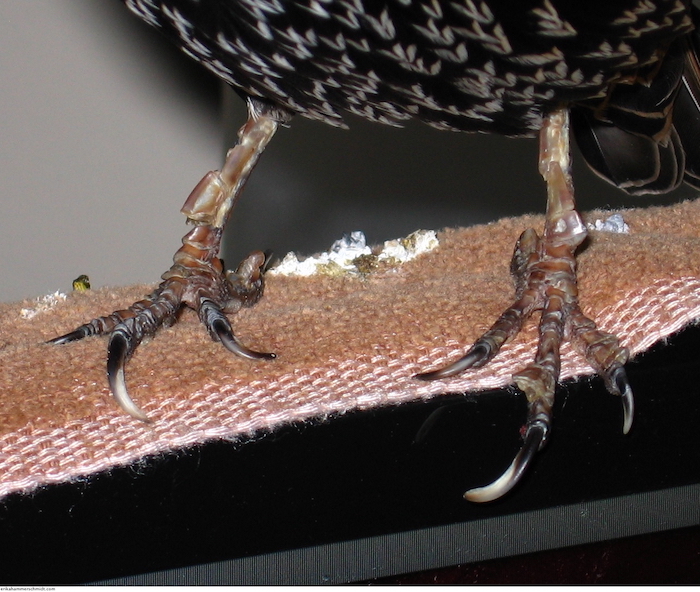
September 20th. By this point he'd shed the long scale on his right foot and the ridiculously tall one on his left foot, but he still had a few stick-out toe scales left, plus the big scales on his legs and the "spurs" on his back toes.
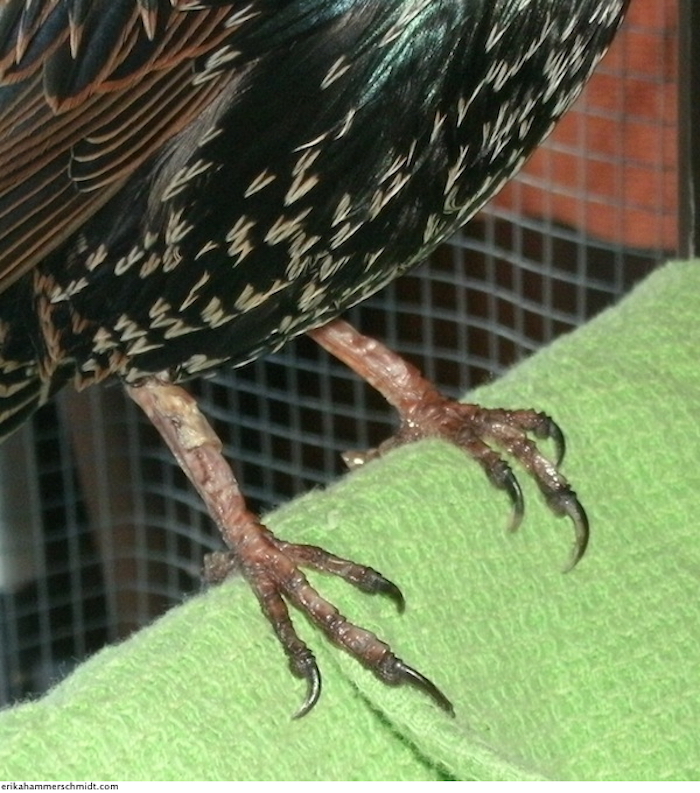
Here he is in December. He had just shed that last big scale on his right leg. It must have been itching, because he was pecking and scratching at his leg, and finally he picked the big scale right off, threw it down and attacked it as if it were a blueberry! He didn't eat it, he just tore it into pieces. I think he was mad at it!
All that was left at this point was a little bit of loose keratin where the big leg scale used to be, and a spur on his left back toe.

January 2014. By this point, he had finally shed both the back-toe spur and the last bit of loose keratin on his right leg.
This marks what I'd call a complete recovery, since all the excess keratin has been shed. Of course, the scales he has now are strangely shaped, from being underneath those big chunky scales for so long. Over his next several molts, they may return to a more normal shape, and if so, I'll post more pictures.

























